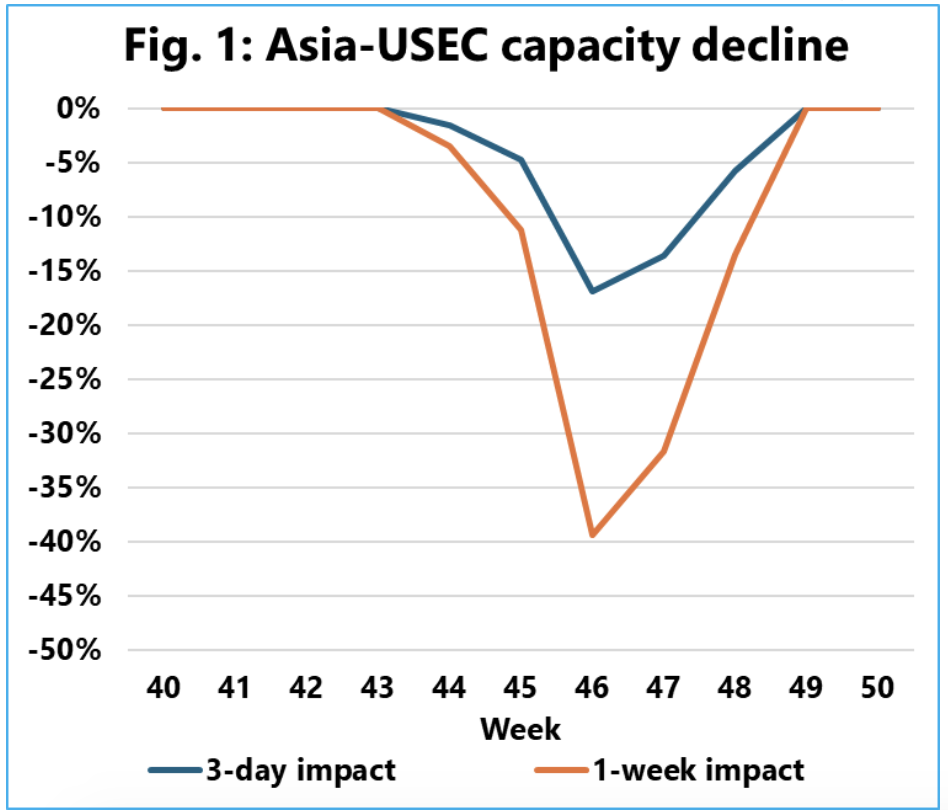
Sea-Intelligence said the swift resolution of the US East Coast ports strike had alleviated concerns about further significant disruptions to supply chains, but the three-day labour action has still impacted capacity.
In a new analysis, the Danish shipping data analysis firm said the port strikes could result in a 10-17% capacity decline in the market.
"Fortunately, the long-feared strike in the US East Coast ports ended after just three days, and the members of the International Longshoremen's Association (ILA) went back to work in the ports on October 4," Sea-Intelligence said, although noting that this may not be the end of it, as the strike concluded with a tentative agreement and a deadline of January 15 for reaching a final agreement.
"As the strike was quite short-lived, the impact was much less than the worst fears, but nonetheless, the 3-day strike did cause vessels to queue, which will have a negative impact on the availability of capacity in origin regions," it added.
Sea-Intelligence noted that, in the most optimistic view, the impact is limited to the three days of striking. However, realistically, as it will take some time to clear the backlog of vessels and containers, the impact is likely to be closer to a week of capacity loss.
The Danish shipping data analysis company referenced data (shown in Figure 1) illustrating the relative capacity loss for Asian exporters. It compares a 3-day and a 1-week impact to a baseline scenario with no strike.

[Source: Sea-Intelligence]
"Here, we see a 17% drop in capacity offered from Asia to the US East Coast in week 46 if the impact is limited to a minimum of vessels being stuck in the US East Coast for just 3 days. If it takes a full week to clear the vessel backlog, then we approach a 40% capacity loss for a short period," Sea-Intelligence said.
Similarly, the analysis noted that for North Europe to the US East Coast, exporters should prepare for a capacity reduction of 14% in week 44, rising to 30% if clearing the congestion takes a full week.
On the Mediterranean to the US East Coast, a 3-day impact leads to a 10% capacity loss in week 43, increasing to 25% for a week-long impact.
"Will the shipping lines take action to mitigate this capacity shortfall? We find this to be quite unlikely," Alan Murphy, CEO of Sea-Intelligence, said.
He noted that doing so would require speeding up the vessels quite substantially – especially on the shorter Transatlantic trades – and this would be in a market environment where the ending of the strike would likely mean a continuation of the rate declines we have seen recently.
"Exporters, especially in Asia, North Europe, and the Mediterranean, should therefore prepare for a temporary, short-term crunch in capacity," Murphy added.



